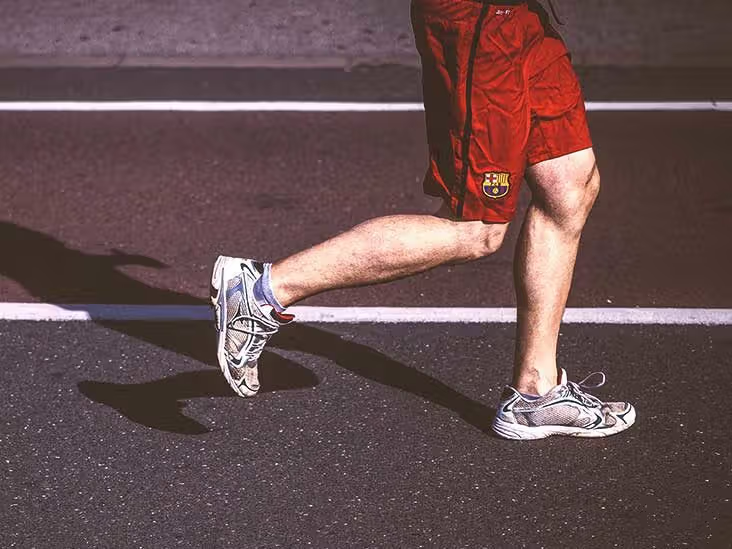
Cardiovascular exercise, commonly known as cardio, is the cornerstone of any effective fitness routine. It’s not just about burning calories; it’s about boosting heart health, enhancing endurance, and elevating overall fitness levels. When it comes to cardio, the debate between high-intensity and low-intensity workouts often arises. Each offers unique benefits, and the best choice depends on your personal fitness goals and preferences.
What is High-Intensity Cardio?
High-intensity workouts are designed to push your body to its limits. These sessions involve short bursts of intense activity followed by brief recovery periods. High-Intensity Interval Training (HIIT) is the most well-known form, where effort is maximized in short intervals, making it impossible to sustain for long.
Why Choose High-Intensity Cardio?
- Maximized Calorie Burn: High-intensity workouts, like those available on Perspire.tv, are incredibly efficient at burning calories, both during and after your workout. This makes them ideal for those aiming for quick and effective weight loss.
- Time-Efficient: In our fast-paced world, finding time for exercise can be challenging. High-intensity cardio allows you to achieve significant results in a shorter amount of time, making it perfect for busy schedules.
- Variety and Challenge: Perspire.tv offers a diverse range of high-intensity classes, from intense indoor cycling to plyometric power sessions, ensuring you never get bored and always find new ways to challenge yourself.
What is Low-Intensity Cardio?
Low-intensity cardio is all about sustainability and consistency. These workouts, such as steady-paced walking or gentle cycling, allow you to maintain a moderate effort level over a longer duration. They are perfect for building endurance and easing into a fitness routine without overexertion.
Why Choose Low-Intensity Cardio?
- Beginner-Friendly: Low-intensity workouts are an excellent starting point for those new to exercise or recovering from an injury. They offer a gentle introduction to cardiovascular fitness, reducing the risk of strain or injury.
- Fat Utilization: During low-intensity workouts, your body primarily uses fat as fuel, making these sessions particularly effective for improving fat metabolism and promoting long-term weight management.
- Stress Reduction and Mental Clarity: Engaging in low-intensity cardio, like a peaceful walk or a light cycling session, can significantly reduce stress and enhance mental well-being, making it a great choice for both body and mind.
Heart Rate, Breathing, and Recovery: The Key Differences
One of the most significant distinctions between high and low-intensity cardio is how they affect your heart and breathing rates. High-intensity workouts rapidly increase both, pushing your body into an anaerobic state where stored glucose is used for energy. This can lead to the “afterburn” effect, where your body continues to burn calories even after the workout ends.
In contrast, low-intensity workouts keep your heart rate at a steady, manageable level, allowing your body to efficiently use oxygen to fuel your muscles. This aerobic state is ideal for endurance training and consistent fat burning.
Recovery time is another crucial difference. High-intensity sessions, due to their demanding nature, require more extended recovery periods, often 48 hours or more. On the other hand, low-intensity workouts are gentle enough on the body that you can engage in them daily without overstraining your muscles or nervous system.
What’s Happening Inside Your Body?
During high-intensity workouts, your body enters an anaerobic state, where it quickly depletes its glucose stores to power through the intense exercise. This can lead to significant changes in your body’s metabolism and hormone levels, often resulting in increased fat loss and muscle gain.
Low-intensity cardio keeps you in an aerobic state, where your body utilizes oxygen to convert fat into energy. This slower, more sustainable process is ideal for building endurance and improving cardiovascular health over time.
Best Exercises for Each Intensity Level
- High-Intensity Workouts: Perspire.tv’s high-intensity offerings include functional fitness circuits, CrossFit-inspired workouts, interval training, and Tabata sessions. These are designed to challenge your body and mind, pushing you to achieve more in less time.
- Low-Intensity Workouts: If you’re looking for something more relaxed, Perspire.tv provides a variety of low-intensity options like walking, gentle cycling, and steady-paced swimming. These exercises are perfect for recovery days or when you need a less strenuous workout.
The Perspire.tv Advantage
One of the standout features of Perspire.tv is its wide array of cardio workouts tailored to different fitness levels and goals. Whether you’re in the mood for a heart-pumping, high-intensity session or a calming, low-intensity workout, Perspire.tv has something for everyone. You can personalize your fitness journey by choosing from a variety of classes and expert instructors, ensuring you stay motivated and engaged.
Conclusion: Which Cardio is Right for You?
Choosing between high-intensity and low-intensity cardio ultimately depends on your fitness goals, lifestyle, and personal preferences. The best approach is often a balanced mix of both, allowing you to reap the benefits of each while avoiding burnout or injury. With Perspire.tv, you have the flexibility to customize your workouts to suit your needs, making your fitness journey both effective and enjoyable.
